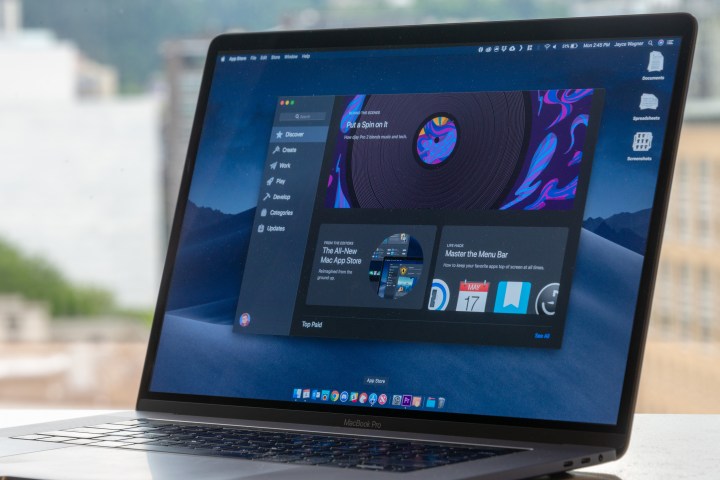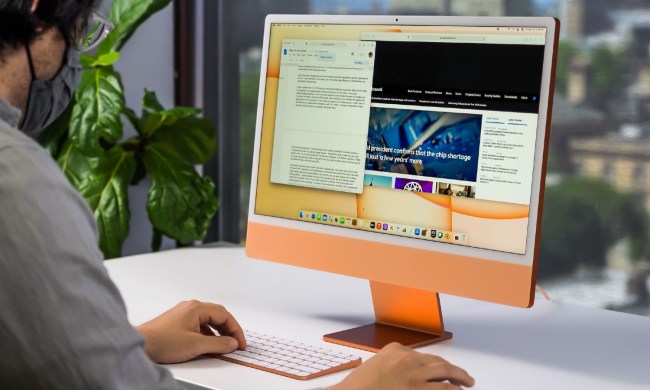Apple is having a pretty terrible time right now amid multiple antitrust hearings and a wave of discontent over the fees it charges developers to use its App Store. It all culminated last week with the controversy of Fortnite being removed from the App Store altogether.
But there is one solution that could potentially end Apple’s woes and deal a blow for consumers and developers at the same time: Make the iOS App Store more like the Mac App Store. It is not such a crazy idea. After all, Apple already has looser restrictions on its Macs than on its iPhones. Here’s why it could be exactly what Apple needs to do.
The problem: Apple’s arbitrariness

When iOS launched, Apple was worried that allowing any old apps on its platform would give it a reputation for dodgy software, much like what happened to the shovel-ware-laden Google Play Store on Android. Instead, it locked iOS down and only allowed apps to be downloaded from its own App Store, thereby giving it a tight control over which apps could make it onto users’ phones.
The lockdown was also intended to boost security on iPhones. Yet iOS is no longer the fresh spring chicken it once was. Its security features have greatly matured since then, with several market-leading lines of defense built right into the operating system. The security reason is no longer a good excuse.
Even worse, Apple maintains this iron grip on iOS but applies its own rules in seemingly arbitrary ways. Every developer must pay a 30% cut of all its App Store earnings in the first year, but Amazon, for example, is exempt. Food and taxi apps let you pay for services without using Apple’s in-app purchase system, but games like Fortnite cannot. It shows that Apple’s claim of treating all developers equally — a claim the company trots out every time the 30% fee issue rears its head — is simply not true. It picks and chooses where to apply the rule.
If users could bypass the App Store and get their iOS apps from third-party stores, none of this would be a problem. Don’t like Apple’s rules? Put your app on a different app store. Today, that is not possible. Developers have no choice but to accept the unpredictable decisions of their benevolent overlord Apple. The idea of Apple allowing third-party app stores might sound unlikely, but let’s not forget: It already applies a more open philosophy to its second most popular platform. The Mac App Store.
The solution: Be more like the Mac

On Apple’s computers, you can download and run any app you like, even if it is from outside the App Store and published by an unidentified developer. By default, your Mac will only let you open apps from the App Store, but you can change this setting at any time.
Imagine if that was the case on iOS. Sure, I would expect Apple to set the App Store as the only place you can get new apps by default, but giving users the option to download apps from elsewhere — just like on the Mac — would still give Apple’s storefront priority while alleviating many of its antitrust concerns.
Here’s why it is a good idea. For one thing, it would be a strong sign of confidence on Apple’s part, allowing the company to show off its world-class system security. There is a reason antivirus apps are a must on Android yet almost unheard of on iOS — features like Kernel Integrity Protection, the Secure Enclave, and Pointer Authentication Codes make it a rock-solid platform. Couple it with an app notarization process so users know they are getting authentic, safe apps from anywhere, and the need for a locked-down App Store system suddenly seems less urgent.
Taking a leaf out of the Mac’s book would also give users more choice. Many Mac developers steer clear of the Mac App Store, whether because Apple does not allow its apps to function correctly or because they dislike Apple’s 30% cut. On iOS, those developers have nowhere to go, and their apps simply cannot exist. Open up the world of iOS apps, though, and suddenly users have far more power in managing their devices how they like.
As well as all that, allowing app downloads from third-party vendors would deflate the antitrust arguments that have besieged Apple in recent weeks. Suddenly, there is no argument that Apple is being unfair to developers and users alike when people can just go elsewhere to get their apps.
But will it ever happen?

This idea is by no means a flawless solution. For one thing, it would take a tremendous change of heart on Apple’s part to make it happen. Apple loves a good locked-down ecosystem, and what better example of that is there than iOS? The company has looked around at the competition, from the virus-riddled Windows to the Google Play Store overflowing with useless (and malicious) cruft, and decided that it wants no part of that. That is a mentality that has formed over decades, even before iOS first came about. Changing Apple’s mind is a task of Herculean proportions.
But it is not just an attitude problem — there are very real financial benefits to what Apple is doing. By making the App Store the only place you can get iOS apps, Apple is ensuring it gets its 30% cut on every single one of them. Those restrictions are what made the iOS App Store the monumental success that it’s become. Removing restrictions would not just knock a gaping hole in Apple’s app wall — it would lose Apple serious heaps of cash. Good luck to the brave soul who proposes that idea to Tim Cook.
That’s why Apple would likely only concede to such an idea if it was forced to — either from public pressure or by regulators.
But the perfect storm could be brewing. Apple is mired in a set of legal challenges, from the House antitrust hearings to Epic Games’ lawsuit over Apple banning its Fortnite game from iOS. If the pressure continues to build, Apple’s hand may be forced.



